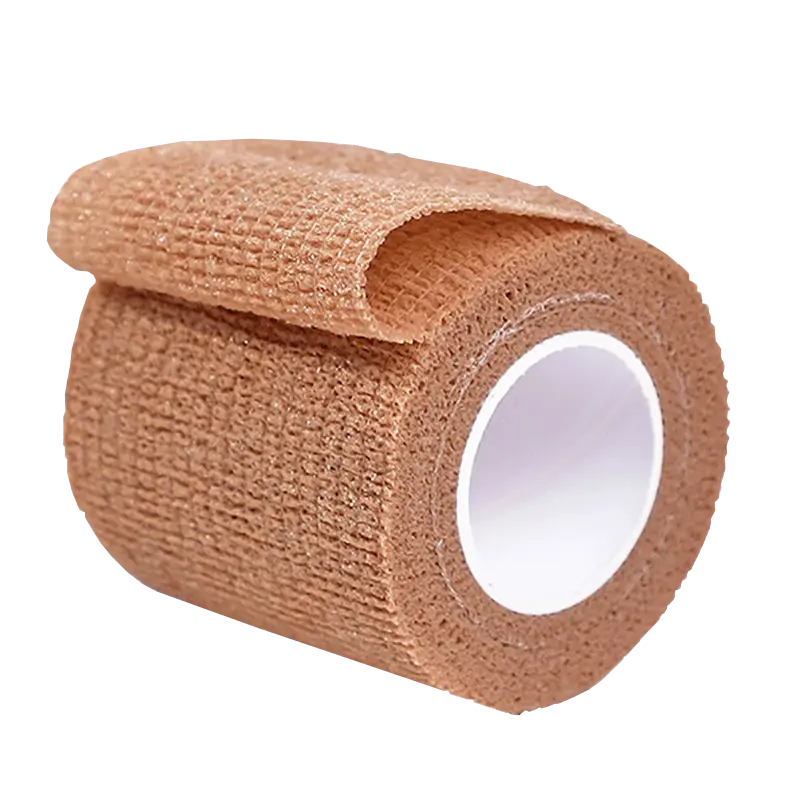Compression Bandage Application: A Guide for Proper Use
A compression bandage is an essential part of first aid for sprains, strains, and other injuries that cause swelling and discomfort. These stretchable bandages help by applying consistent pressure to reduce swelling, pain, and fluid buildup in the affected area. They are often used in combination with other first-aid techniques such as R.I.C.E. (Rest, Ice, Compression, Elevation) to promote faster healing.
Choosing the Right Compression Bandage Size
Compression bandages come in various widths, typically ranging from 2 inches to 6 inches. Selecting the right size is essential to ensure proper compression without cutting off circulation. Here’s how to choose the correct size for different body parts:
- 6-inch bandage: Suitable for wrapping the chest, torso, or thigh.
- 3 to 4-inch bandage: Ideal for wrapping an adult arm or leg.
- 2-inch bandage: Best for children’s arms or legs, or for adult fingers.
If you notice signs of restricted blood flow such as swelling, numbness, tingling, or a bluish/purplish skin tone, the bandage might be too tight, and you should loosen it immediately.
How to Use a Compression Bandage Effectively

Applying the right amount of pressure is key to the bandage’s effectiveness. Too much pressure can cut off circulation, while too little will not help in reducing swelling. Follow these guidelines for applying a compression bandage to different areas:
How to Wrap a Leg or Arm
- Start by rolling up the bandage if it’s not already pre-rolled.
- Position the limb in a neutral position.
- Begin wrapping from the farthest end of the limb and move upwards, overlapping each layer by an inch or so.
- Once wrapped, secure the end of the bandage with clip fasteners or adhesive tape.
How to Wrap an Ankle
- Begin with the bandage rolled up and facing up.
- Keep the ankle at about a 90-degree angle.
- Wrap the bandage starting from the ball of the foot, moving up to the heel.
- Leave the heel exposed and continue wrapping in a figure-8 pattern, covering the entire foot and ankle.
- Finish by securing the end with clip fasteners or tape.
How to Wrap a Wrist
- Begin by rolling the bandage.
- Start at the base of the fingers and wrap the bandage between the thumb and index finger.
- Continue wrapping around the hand and wrist, overlapping as you go.
- Wrap the wrist several times, ending about 5 to 6 inches above the wrist.
- Secure the bandage with clip fasteners or tape.
Dos and Don’ts of Using Compression Bandages
While compression bandages are helpful in managing pain and swelling, there are some important guidelines to follow to ensure safety and effectiveness:
Dos:
- Apply the compression bandage within the first 24 to 48 hours after an injury.
- Always combine rest and elevation with compression to maximize healing.
- Remove the bandage at least twice daily to give the area a break before reapplying.
- If you’re unsure whether to wear a bandage while sleeping, ask your healthcare provider.
Don’ts:
- Never apply ice and compression at the same time to avoid the risk of frostbite.
- Avoid wrapping the bandage too tightly as this can restrict blood flow.
- Do not use a compression bandage as a long-term solution for preventing re-injury.
- Ensure that the bandage has adequate elasticity. Old or worn-out bandages should be replaced.
Alternative Compression Solutions
If compression bandages are not ideal for your specific injury, there are alternatives available:
- Compression wraps: These are wider elastic bands secured with Velcro, ideal for larger body parts like the chest or thighs.
- Tube-like elastic sleeves and compression socks: Suitable for longer use, these options provide even compression over extended periods.
- Self-adherent compression bandages (e.g., Coban or Dynarex): These bandages function like tape but don’t stick to the skin. They can be torn to specific lengths and are available in various widths.
When to Consult a Healthcare Provider
While compression bandages are helpful for initial injury treatment, they are not suitable for all conditions. If you experience severe pain, a visible deformity, difficulty moving the joint, excessive bruising or swelling, or are unable to stand or walk, you should immediately consult a healthcare provider.
Summary
A compression bandage is a versatile and essential tool for treating sprains, strains, and swelling. It helps reduce pain and inflammation by applying pressure to the affected area. Proper application and using the right size are key to its effectiveness. For best results, remember to combine the use of a compression bandage with rest, ice, and elevation.
Sample application
We are a company deeply engaged in the field of orthopaedic products, if you are interested, please click the button below to contact our professional team, we can provide including but not limited to consulting services, sample supply, questions.
